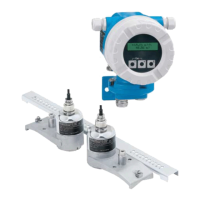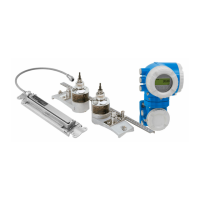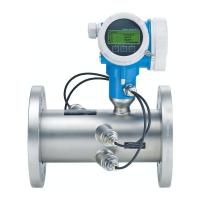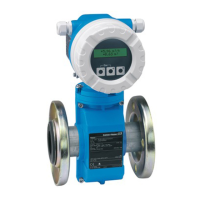PROline Prosonic Flow 93 PROFIBUS-DP/-PA 6 Commissioning
Endress+Hauser 113
6.5 Application-specific commissioning
6.5.1 Zero point adjustment
A zero point adjustment is generally not necessary.
Experience shows that the zero point adjustment is advisable only in special cases:
To achieve highest measuring accuracy with very low flow rates.
Under extreme process or operating conditions (e.g. very high process temperatures
or very high viscosity fluids).
Preconditions for a zero point adjustment
Note the following before you perform a zero point adjustment:
A zero point adjustment can be performed only with fluids that contain no gas or solid
contents.
Zero point adjustment is performed with the pipe completely filled and at zero flow
(v = 0 m/s). This can be achieved, for example, with shut-off valves upstream and/or
downstream of the sensor or by using existing valves and gates (Fig. 69).
– Standard operation
Valves 1 and 2 open
– Zero point adjustment with pump pressure
Valve 1 open / valve 2 closed
– Zero point adjustment without pump pressure
Valve 1 closed / valve 2 open
"
Caution!
If the fluid is very difficult to measure (e.g. containing entrained solids or gas) it may
prove impossible to obtain a stable zero point despite repeated zero point
adjustments. In instances of this nature, please contact your E+H service centre.
You can view the zero point value currently valid using the “ZERO POINT” function
(see the “Description of Device Functions” manual).
– PROFIBUS interface / configuration program: manufacturer-specific Transducer
Block (PROSONIC 93 PBUS)
Matrix “Sensor data” ZERO POINT CH1 (V4H1)
/ CH2 (V7H1)
– Local display: HOME
F R BASIC FUNCTIONS F R SENSOR
DATA
F R CALIBRATION DATA N ZERO POINT
Fig. 69: Zero point adjustment and shut-off valves
1
2
F06-9xxxxxxx-11-00-00-xx-001

